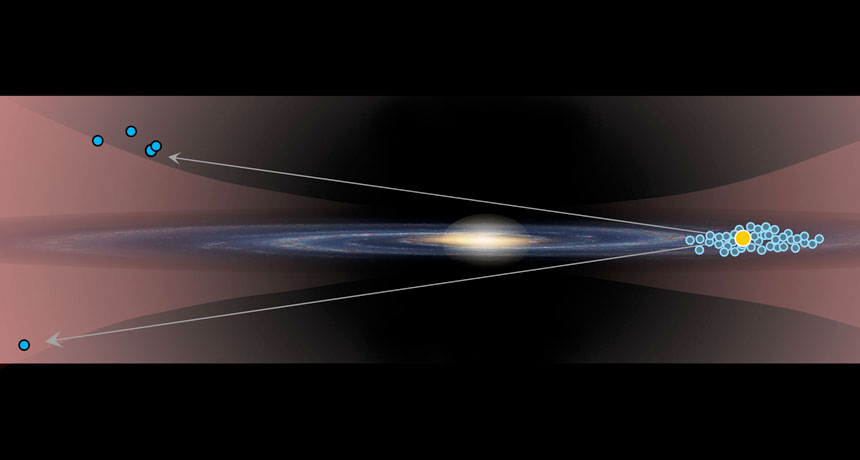
FAR, FAR AWAY Five newly discovered Cepheid variable stars (blue circles, left), seen in an illustration of the Milky Way, sit on the opposite side of the galactic center, roughly 75,000 light-years away from Earth (yellow). The cluster of pale blue dots (right) marks previously known galactic Cepheids. Pink areas show the Milky Way’s hydrogen gas, which flares out toward the edge of the galaxy.
R.M. Catchpole/Institute of Astronomy/Univ. of Cambridge, JPL-Caltech/NASA







